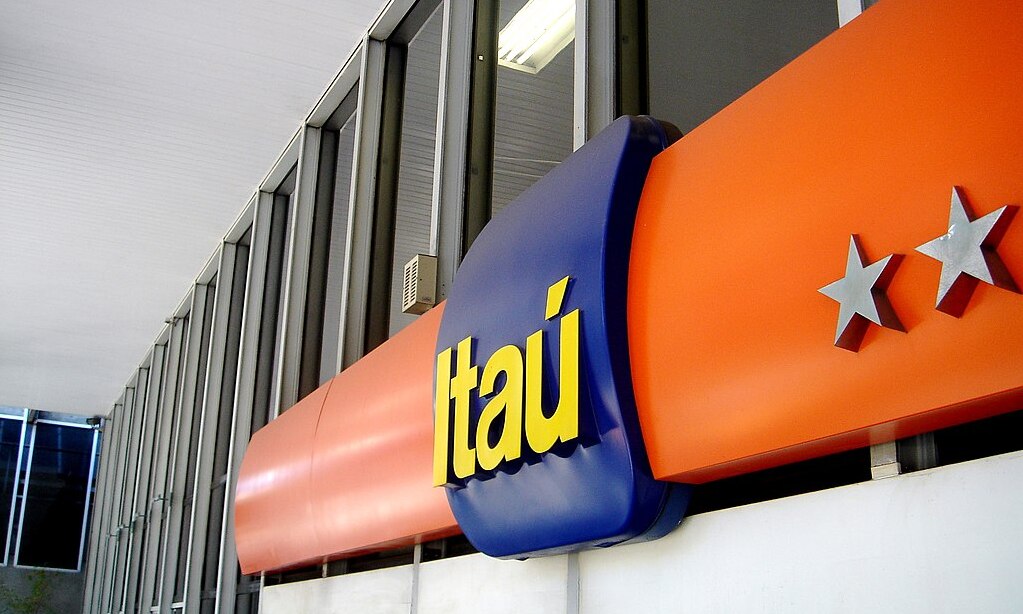En este Global Wealth Investment Playbook del tercer trimestre de 2025, observamos que el crecimiento mundial se mantiene resistente a pesar de la incertidumbre que rodea a la evolución de las políticas comerciales y la desaceleración del crecimiento en Estados Unidos. Los estímulos fiscales en Alemania y China, las reformas en curso en Japón y el sólido crecimiento interno de la India contrastan con el aumento de los aranceles, la subida de los tipos de interés, la disminución de la inmigración y la debilidad del mercado laboral, que lastran el crecimiento de Estados Unidos.
Para los asesores financieros, la gestión de la duración sigue siendo fundamental ante la previsible caída de los tipos de interés. Creemos que las clases de activos orientadas a la renta variable deberían fortalecerse y que las estrategias de crédito a tipo fijo deberían beneficiarse, aunque la calidad y la diversificación siguen siendo importantes en todos los ámbitos. La exposición a los flujos de efectivo basados en garantías en clases de activos como la infraestructura y la renta variable inmobiliaria puede ser útil para los inversores que buscan equilibrar el crecimiento económico continuo, la caída de los tipos de interés y la elevada volatilidad de la inflación.
Seis conclusiones
1) Al finalizar el tercer trimestre, el crecimiento mundial se mantiene resistente a pesar de la incertidumbre que rodea a las políticas comerciales en constante evolución. Se estima que el crecimiento mundial solo se desacelerará modestamente, del 3,3 % en 2024 a entre el 2,8 % y el 3 % a finales de este año. La introducción de estímulos fiscales en Alemania y China, junto con las reformas en curso de Japón y el sólido crecimiento interno de la India, han contrarrestado la desaceleración del crecimiento que hemos presenciado en los Estados Unidos. La diversificación geográfica de la cartera debería seguir beneficiando a los inversores.
2) De hecho, la economía estadounidense necesita un respiro en medio de una desaceleración del crecimiento, que pasará del 2,4 % en 2024 al 1,4 % en el primer semestre de 2025. El aumento de los aranceles, la subida de los tipos de interés, la disminución de la inmigración y la debilidad del mercado laboral están lastrando el crecimiento de Estados Unidos. Por suerte, también hemos visto cómo se ralentiza la inflación en medio de la debilidad de los salarios y el trabajo.
3) La Junta de la Reserva Federal dispone ahora de datos suficientes para iniciar su ciclo de recortes de tipos. Nuestro equipo macroeconómico de EE. UU. prevé tres recortes de tipos de interés en 2025 y un tipo terminal del 3-3,25 %, frente al 4,25-4,5 % actual. En el extremo largo de la curva, la previsión de nuestro equipo para el rendimiento de los bonos del Tesoro a 10 años es del 4,25-4,5 % para este año, con una caída hasta el 4 % a más largo plazo. A corto plazo, la prima de plazo podría aumentar en un contexto de debilitamiento de los fundamentales. La incertidumbre sobre la inflación y las preocupaciones por el déficit también seguirán pesando sobre los bonos. Dicho esto, históricamente, en un contexto de flexibilización monetaria, la inquietud de los inversores por los amplios déficits tiende a reflejarse en la debilidad de la moneda frente a un fuerte aumento de los rendimientos de la deuda pública, especialmente si no se produce una expansión significativa del déficit.
4) Dada la tasa de fondos federales previa a la COVID-19 del 1,5-1,75 %, mantenemos nuestra opinión sobre una tasa de interés en reposo más alta. Las fuerzas estructurales impulsadas por los cambios geopolíticos, demográficos, los estímulos fiscales, la transición energética y la inteligencia artificial están provocando elevados niveles de volatilidad de los precios. La agenda del presidente Trump, definida por los aranceles, la desregulación y las reformas migratorias, refuerza aún más la idea de que nos encontramos en un nuevo régimen de inversión.
5) En medio del crecimiento económico continuo, la caída de los tipos de interés y la elevada volatilidad de la inflación, seguimos inclinándonos por los flujos de caja basados en garantías. Las infraestructuras siguen siendo una clase de activos válida en cualquier circunstancia. La renta variable inmobiliaria y sus ingresos fiscalmente eficientes se vuelven más atractivos. La gestión de la duración sigue siendo fundamental para garantizar la exposición a activos sensibles a los tipos de interés bien posicionados para una caída de los tipos. La financiación basada en activos, con su composición de tipos fijos, debería beneficiarse. El impulso desinflacionista también debería beneficiar a los instrumentos de renta fija.
6) A medida que bajan los tipos de interés, es probable que aumenten los flujos hacia el capital riesgo. A pesar de la elevada volatilidad en la primera mitad de 2025, las salidas respaldadas por capital riesgo aumentaron un 72 % interanual. El capital riesgo sigue ofreciendo el mayor potencial de rentabilidad, dados los factores que impulsan la creación de valor y la exposición a segmentos atractivos de la economía a los que puede ser más difícil acceder a través de los mercados públicos.
Otros aspectos a considerar
- Los mercados privados proporcionan diversificación, y se espera que la prima de iliquidez aumente en los próximos cinco años.
- Las valoraciones en un ciclo asíncrono probablemente fluctúen más de lo normal.
- En comparación con la cartera tradicional 60/40, los inversores pueden inclinar la exposición a las clases de activos para aumentar la rentabilidad y reducir la volatilidad.
- Las clases de activos alternativos han ayudado históricamente a los inversores a generar ingresos, preservar el capital y aumentar la rentabilidad.
Para leer el informe completo se puede consultar la web oficial de KKR.
Tribuna de Paula Campbell Roberts, directora de estrategias de inversión para Global Wealth de KKR
Important Information
The views expressed in this presentation are the personal views of the speaker and do not necessarily reflect the views of Kohlberg Kravis Roberts & Co. L.P. (together with its affiliates, «KKR») itself. This presentation is not research and should not be treated as research. This presentation does not represent valuation judgments with respect to any financial instrument, issuer, security or sector that may be described or referenced herein and does not represent a formal or official view of KKR. This presentation is not intended to, and does not, relate specifically to any investment strategy or product that KKR offers. It is being provided merely to provide a framework to assist in the implementation of an investor’s own analysis and an investor’s own views on the topic discussed herein.
The views expressed reflect the current views of the speaker as of the date hereof and neither the speaker nor KKR undertakes to advise you of any changes in the views expressed herein. Opinions or statements regarding financial market trends are based on current market conditions and are subject to change without notice. References to a target portfolio and allocations of such a portfolio refer to a hypothetical allocation of assets and not an actual portfolio. The views expressed herein and discussion of any target portfolio or allocations may not be reflected in the strategies and products that KKR offers or invests, including strategies and products to which the speaker provides investment advice to or on behalf of KKR. It should not be assumed that the speaker has made or will make investment recommendations in the future that are consistent with the views expressed herein, or use any or all of the techniques or methods of analysis described herein in managing client or proprietary accounts. Further, the speaker may make investment recommendations and KKR and its affiliates may have positions (long or short) or engage in securities transactions that are not consistent with the information and views expressed in this document.
This presentation has been prepared solely for informational purposes. The information contained herein is only as current as of the date indicated and may be superseded by subsequent market events or for other reasons. Charts and graphs provided herein are for illustrative purposes only. The information in this presentation has been developed internally and/or obtained from sources believed to be reliable; however, neither KKR nor the speaker guarantees the accuracy, adequacy or completeness of such information. Nothing contained herein constitutes investment, legal, tax or other advice nor is it to be relied on in making an investment or other decision.
There can be no assurance that an investment strategy will be successful. Historic market trends are not reliable indicators of actual future market behavior or future performance of any particular investment which may differ materially and should not be relied upon as such. Target allocations contained herein are subject to change. There is no assurance that the target allocations will be achieved, and actual allocations may be significantly different than that shown here. This presentation should not be viewed as a current or past recommendation or a solicitation of an offer to buy or sell any securities or to adopt any investment strategy.
The information in this presentation may contain projections or other forward‐looking statements regarding future events, targets, forecasts or expectations regarding the strategies described herein, and is only current as of the date indicated. There is no assurance that such events or targets will be achieved and may be significantly different from that shown here. The information in this presentation, including statements concerning financial market trends, is based on current market conditions, which will fluctuate and may be superseded by subsequent market events or for other reasons. Performance of all cited indices is calculated on a total return basis with dividends reinvested. The indices do not include any expenses, fees or charges and are unmanaged and should not be considered investments.
The investment strategy and themes discussed herein may be unsuitable for investors depending on their specific investment objectives and financial situation. Please note that changes in the rate of exchange of a currency may affect the value, price or income of an investment adversely.
Neither KKR nor the speaker assumes any duty to, nor undertakes to update forward looking statements. No representation or warranty, express or implied, is made or given by or on behalf of KKR, the speaker or any other person as to the accuracy and completeness or fairness of the information contained in this presentation, and no responsibility or liability is accepted for any such information. By accepting this presentation in its entirety, the recipient acknowledges its understanding and acceptance of the foregoing statement.
The MSCI sourced information in this presentation is the exclusive property of MSCI Inc. (MSCI). MSCI makes no express or implied warranties or representations and shall have no liability whatsoever with respect to any MSCI data contained herein. The MSCI data may not be further redistributed or used as a basis for other indices or any securities or financial products. This report is not approved, reviewed or produced by MSCI.
In some cases, performance shown in this presentation is compared to the performance of the S&P 500 and/or Russell 3000 broad‐based securities indices. The market indices returns assume that dividends are reinvested and that on the day a portfolio investment is made, a hypothetical investment in a matching amount is made in the given index. For each date on which either a portion or all of the portfolio investment is sold, a hypothetical index multiple (factor) is calculated by comparing the change in index value between the two dates. The cost of the investment sold (or portion of cost sold) is multiplied by this factor, resulting in a hypothetical index value. The return is calculated using these dates of investment and hypothetical value(s) generated. Broad‐based securities indices are unmanaged and are not subject to fees and expenses typically associated with investment funds.
Investments cannot be made directly in a broad‐based securities index. The risk/return profile of the S&P 500 and Russell 3000 are materially different from those of the Fund and any other KKR Product, and an investment in the Fund is not comparable to an investment in the securities that comprise the S&P 500 or Russell 3000 indices. The S&P 500 and Russell 3000 are not used or selected by KKR as an appropriate benchmark to compare relative performance of any KKR Product but rather are included herein solely because they are well‐known and widely‐recognized indices. Investors should be aware that private equity funds such as the Fund may incur losses both when major indices are rising and when they are falling.
References to “KKR Capstone” or “Capstone” are to all or any of KKR Capstone Americas LLC, KKR Capstone EMEA LLP, KKR Capstone EMEA (International) LLP, KKR Capstone Asia Limited and their Capstone‐branded subsidiaries, which employ operating professionals dedicated to supporting KKR deal teams and portfolio companies. KKR acquired KKR Capstone effective January 1, 2020. References to operating executives, operating experts, or operating consultants are to such employees of KKR Capstone. In this document, views and other statements regarding the impact of initiatives in which KKR Capstone has been involved are based on KKR Capstone’s internal analysis and information provided by the applicable portfolio company. Such views and statements are based on estimates regarding the impact of such initiatives that have not been verified by a third party and are not based on any established standards or protocols. They can also reflect the influence of external factors, such as macroeconomic or industry trends, that are unrelated to the initiative presented.
Copyright 2025 © Please consult www.kkr.com for further important disclosures. All rights reserved.





